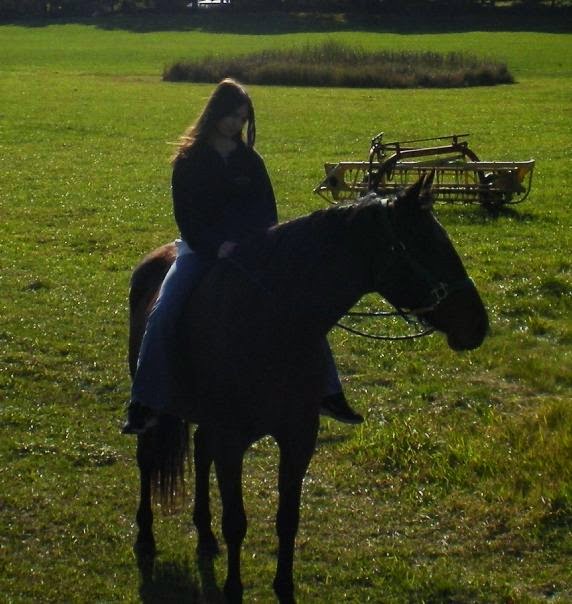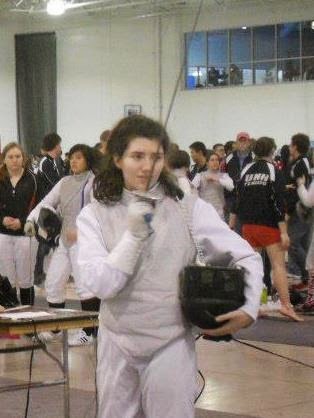The use of technologies such as iPads, iPods and iPhones
has become mainstream in recent years.
However it’s not just the adult world who has been influenced by the
modern age.
Children have
become so involved with technology that new products have been designed to
enable their screen play. Not only are
there drool-proof tablet covers to protect the devices, but since just last
year parents can purchase a toilet training potty with an attached stand for an
iPad, appropriately called an iPotty, for just $40. The model was even adapted into a bouncy seat
by Fisher Price, which they call an “Apptivity Seat,” according to a Washington
Post article.
Children’s
prominence in the technological world at a very young age has led psychologists
like Dr. Daniel Anderson, professor emeritus in psychology at the University of
Massachusetts Amherst, to study how their mental capacities, social skills and
physical health might be affected.
In Anderson’s
experience, he has found that media can both foster and inhibit learning
depending on the content, although he said that touch screen technologies allow
children to learn more than television because of their interactive qualities. He also believes that advertisements can
encourage unhealthy behavior and that frequent technology use contributes to
obesity.
During his 40
years working at UMass before retirement, Anderson primarily studied the
effects of television viewing on children.
He also served as an educational advisor in the production of television
shows such as “Blues’ Clues,” “Dora the Explorer” and “Sesame Street,” among
others, for over 20 years. As an
educational advisor, Anderson gave producers his input regarding how to make
the shows mentally stimulating for children.
From his
experience, Anderson said the effect of television on children mostly depends
on their age, the content of the shows and then to a lesser extent, the amount
of time they spend watching. He does not
condemn TV-watching by children.
“Television
can be a very effective educational medium,” Anderson said.
As an example,
Anderson explained a study of “Sesame Street” that he and other professors at
UMass had participated in in collaboration with professors at the University of
Kansas, where they observed the progression of 560 kids from Springfield, Mass.
and Topeka, Kan. from preschool through high school graduation.
“We found that
the more they had watched “Sesame Street” as a preschooler, the better grades
they got in high school in English, math and science,” Anderson said.
Parents take
notice of the educational quality technology can have. Dawn Kennedy, a resident of Leverett, Mass.,
has found that watching television and playing on the iPad has helped her
22-month-old daughter Anika learn to speak clearly.
“Anika’s
clearest vocabulary is words that she’s learned from apps or TV,” Kennedy said.
In fact, Kennedy said her daughter’s
most-clearly pronounced word is “map,” which she learned from watching “Dora
the Explorer.” Kennedy believes this may
be because even though she spends a lot of time having conversations with her
child, she isn’t saying the same words repetitively as is often the case in
children’s television shows, so Anika doesn’t learn the words as quickly.
Sue Kelly,
coordinator at the Amherst Family Center in Amherst, Mass., agrees that
technology “could definitely be an educational tool,” but that socializing is
equally, if not more important. For this
reason, she doesn’t use any technology at AFC.
“They need to
practice being with each other, not being with a mouse,” Kelly said.
As it is, the
effects of technology on children aren’t entirely positive. Anderson recognizes limitations, saying that
“there’s plenty of junk on television and in the digital media,” that can
harmfully affect children, such as violent programming that can cause children
to act more aggressively and impulsively.
In fact, the
study of the 560 “Sesame Street” viewers demonstrated some of the effects of
viewing television violence at a young age, as the researchers had very
detailed information about the children’s television viewing habits.
“The more they
watched action and violent programming, the worse they did in high school,”
Anderson said. “This effect was
particularly true for girls.”
Furthermore, Anderson
explained that the content of commercials is key in triggering unhealthy
behavior.
“Spending too
much time watching television, because it’s inherently sedentary can be bad for
kids’ health, but also the food advertising on television really tilts heavily
towards foods that aren’t very healthy, so it can contribute to obesity and
other health problems,” he said.
Because of the
often sexual content of media, Anderson said that some advertisements encourage
premature sexuality. Still other ads,
which focus on alcohol and tobacco, encourage kids to experiment at much
earlier ages.
The content of
advertisements is one of the reasons why Cameron Carey and his wife Sarah of
Hadley, Mass., don’t allow their four-year-old son Devin to watch any
television at all. Carey said he doesn’t
want Devin to hear bad language or watch adult-level content, whether it’s from
an advertisement or a television show.
“He picks up
bad language or bad behavior if he happens to see something in a cartoon,”
Carey said.
When Devin was
allowed to watch television, Carey said he saw his son try to duplicate in real
life what he had watched on television.
Even the violence of older cartoons, that can seem innocent to adults,
like hitting someone on the head with a frying pan, can have a negative impact
on children’s behavior, Carey said.
Nonetheless, in
today’s high-tech world of touch screen devices, television isn’t the only form
of media affecting children. Anderson is
continuously broadening his area of study to include newer technologies. However, he said that the health risks are
the same as with watching television, since for the most part interactive media
remains sedentary and advertising is still prominent.
Yet because technology such as tablets and
other touch screen devices are still so new, their long-term effects on
children are not fully understood since in-depth studies can take years to
complete. Anderson said he’s currently
working with another faculty member and one of his graduate students to develop
a proposal to study the effects of touch screen devices.
All the same,
Anderson spoke of one of his former students, now a professor at the University
of Wisconsin, who is just finishing up an essay about her studies of children
and touch screen devices.
“She’s
basically found that babies learn more from touch screen media than they do
from TV,” he said. He explained that
this could be because touch screen media is far more interactive than
television, allowing children to learn certain mental skills that are not
fostered by television.
As a
recommendation, Anderson cites the advice of the American Academy of
Pediatrics: no screen time should be allowed before the age of two, then from
the ages of two to five about one hour of screen time a day can be permitted,
and after the child is older than five, two hours a day is acceptable.
Local parents
like Phoebe Hazzard are setting limits on screen time that coincide with
Anderson’s recommendation. Hazzard says
her five-year-old daughter Stella and her three-year-old son Sidney are only
allowed 30 to 60 minutes with all forms of technology each day. They often watch a show on PBS in the
afternoon and are given some time before bed to watch a YouTube clip or play on
a drawing app called Doodle Buddy.
Hazzard has found
that allowing her children to use technology too much can negatively affect them
because she said it has “a very addictive quality.” When Stella was younger, Hazard allowed her
to use the tablet for short periods four times a day. Her daughter began to ask to use the tablet
so frequently that she minimized her screen time.
Hazzard also
commented on how absorbed her children become when they’re given the tablet.
“They’re
totally sucked in. You can’t even talk
to them,” she said.
Carey noticed
this addictive quality of touch screen devices with his son. Carey said he used to allow Devin to play a
language-learning game on the Kindle where he could match pictures to Spanish
words, but Devin started to become overly involved with the game.
“He quickly
became demanding. Almost like an
addict,” Carey said.
Because of Devin’s
behavior, he hasn’t been allowed to play the game in a year. Instead, he is allowed to watch YouTube
videos for 20 to 30 minutes a day, which his parents choose for him. Even then, Carey said it is necessary to give
his son several warnings before taking the tablet away or he will push to watch
more.
Though there
are parents like Carey who are highly restrictive concerning their children’s
media use, Anderson has noticed that parents often seem proud of their children
for their savviness with technology.
“It is funny
that parents take great delight in their babies’ media use,” Anderson
said. “When babies really pay attention
or get excited by something they see on the screen, parents get extremely
interested in that.”
Carey would
argue that he’s not proud, but impressed by Devin’s versatility.
“I am very
impressed and surprised at how quickly children can adapt to what’s going on on
the screen,” he said.
This feeling
of bewilderment is a common theme among parents, Kennedy included, who said
she’s “so amazed” that Anika can turn on the tablet and find her apps at
22-months-old.
Elianis
Gautier of Amherst said her two sons, four-year-old Boqian and two-year-old Kendrick
are very adept with their children’s tablet, which allows for more parental
blocks and is more durable than an adult tablet.
“They’re
really fast learners with technology,” Gautier said. “I’m slow, but you give them an iPhone, they
know how to use it. You give them a
tablet, they know how to use it.”
Gautier also
puts restrictions on her children’s media use, limiting it to an hour a day,
although she admits she sometimes lets them go over the time limit. For many parents, if they need to keep their
children occupied or need a break from watching them, they allow them to use
technology longer than usual.
For example,
Kennedy limits Anika’s media use to an hour a day, like Gautier, but says that
if they’re on a road trip, the tablet is used to keep them occupied.
Carey also
said his son’s tablet use is often “purpose-oriented.” The tablet is used to keep Devin quiet and
immersed long enough to let his younger brother, Cameron Jr., fall asleep.
Surprisingly,
Kelly believes that this use of technology to keep children distracted can
actually be a good thing.
“There’s not a
way to get a break and when a parent gets a break, they’re a better parent,”
Kelly said.
However,
Anderson argues that there can be negative effects to utilizing technology as a
distraction, even though it gives parents some time for themselves.
“In two
studies now, we’ve found that when kids are with their parents and there’s a TV
going on, the parents’ behavior is really affected and it’s affected negatively
as parents are less caregiving and less responsive to their kids,” Anderson
said.
In fact,
Anderson found in his studies that when children are occupied with technology,
parents talk less with them, with an average reduction of 315,000 words a year. He cautions against parents getting too
distracted themselves and not spending enough time talking with their children.
Overall,
Anderson thinks it’s necessary for children to have well-balanced lifestyles
where screen time, creative play with toys and traditional education,
particularly reading, can all play their roles in positively developing
cognitive functioning.
By Shelby Ashline


.png)
.png)
.png)